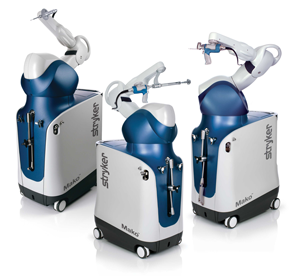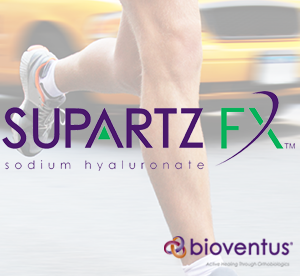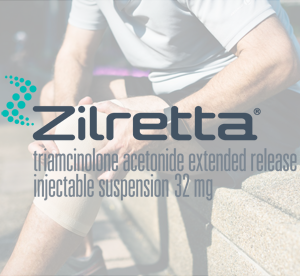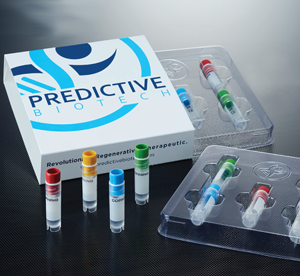Welcome the the Orthogo Learning Center!
The more you know and understand, the better your experience will be. This center is an ever-changing, ever-growning place for you to find answers to many of your questions, and learn more about the products and procedures we incorporate into your treatment plans. Be sure to check back often to stay up to date on the latest information!
OrthoGo Frequently Asked Questions
We understand you may have questions at any stage of your orthopedic experience. We are here to help answer those questions! Below are some answers to the most common questions. If you don’t see the answer you’re looking for, please contact us, we are always glad to help!
Learn More About Our Procedures
Below you can find more resources on the products and procedures we incorporate into your treatment plans. Our goal is to keep you informed on the newest and best options available, so together, we can focus on giving you a full, quick recovery.
General FAQ
Advances in medical technologies — including the prosthetic materials used in total and partial hip, knee, elbow and shoulder joints — continue to extend the life expectancy of artificial joints. Generally speaking, today’s prosthetic devices can last upwards of 15-20 years. Factors that can impact the durability of prosthetics include your activity level, overall health, weight and whether you have arthritis.
Your physician will be able to conduct tests such as X-Rays or bone scans to determine for certain if you have a sprain or a fracture. Keep in mind that a sprain is an injury to the ligaments (tissues that connect your bones), whereas a fracture is an injury to your bone. Sprains heal with time and rest, but a fracture will require some type of treatment (splint, cast, crutches, wheelchair and/or surgery).
Corticosteroids, more commonly referred to as, cortisone, is a steroid produced in the body naturally. Synthetically produced cortisone can also be injected into soft tissues and joints to help decrease inflammation. While cortisone is not a pain reliever, pain may diminish as a result of reduced inflammation. In orthopedics, cortisone injections are commonly used as a treatment for chronic conditions such as bursitis, tendonitis, and arthritis to reduce swelling, pain, and joint stiffness.
An X-ray is a procedure performed using a safe form of radiation to provide a two-dimensional picture of your body. X-rays are used as a screening tool to evaluate for causes of many common disorders, such as bone breaks, joint and spine injuries or conditions, and arthritis or osteoporosis.
Insurance FAQ
We do not require a referral from your primary care doctor to be seen. However, if your insurance requires a referral to be seen by a specialist, you primary care doctor will need to obtain this for you prior to being seen in our office.
We take most insurances; if your specific insurance isn’t listed here, that doesn’t mean we aren’t in network.
- All forms of Tenncare (BlueCare, Amerigroup, United Healthcare Community Plan)
- Aetna
- AARP Medicare Complete
- Blue Cross Blue Shield
- Blue Cross Blue Shield Medicare Advantage
- Cigna
- Healthspring (referral required)
- Humana (Commercial & Medicare)
- Medicare
- Multiplan
- Oscar
- Tricare (Prime requires referral)
- United Healthcare (Commercial & Medicare)
- UMR
- WellCare
Appointment FAQ
If you have an appointment scheduled with an orthopedic specialist, be sure to come prepared with your insurance card, a photo ID, list of current medications, co-payment (if applicable) and any questions you may have to ask your specialist. Sometimes it’s helpful to bring a written list of questions you have so you don’t forget any during the appointment. Additionally, check with the location to see if there is paperwork you can fill out in advance of your appointment to speed up the process. If for any reason you cannot keep your orthopedic appointment, please notify your doctor.
Pre-Surgery FAQ
There’s no one-size-fits-all answer for deciding when to have surgery. Your orthopedic surgeon or other doctors will help you determine when surgery is the most appropriate next step. Key considerations include whether you’re in pain, if you’re experiencing instability or decreased mobility, and whether the injury or condition is affecting your quality of life.
Please do not consume food or liquids after midnight on the evening prior to your surgery date due to complications associated with anesthesia. This includes mints and chewing gum. Additionally, we recommend that you do not smoke, chew tobacco, or consume alcohol for at least 24 hours prior to your surgery.
Presurgery Hygiene & Dress
- You may brush your teeth the night prior to surgery, but remember not to swallow liquids after midnight.
- Jewelry, watches, and body piercings should not be worn on the day of surgery.
- Do not bring valuables with you. You may wear dentures and glasses. However, it is recommended that you bring the cases to place them in during surgery. If you wear contacts, they will need to be removed, so bring your solution and a case with you.
- Please wear comfortable, loose clothing, appropriate for the procedure being performed, such as a button front blouse/shirt for shoulder surgery.
If you have been provided with any medical equipment prior to your surgery date, such as slings, crutches, postoperative shoes, or walkers, please present them at check-in.
Please make sure you are following all medication protocols explained to you prior to surgery
We currently have three convenient surgery locations:
Post-Surgery FAQ
Following surgery, you will be seen at your designated clinic location.
Please call or email to schedule your appointment, typically plan for 10 days after surgery, unless otherwise specified at the time of surgery. Please let us know of your surgery date at time of scheduling.
There is no set rule, but we usually ask patients to remove their dressing in two days. Washing the wound after removal of the dressings with soap and water is recommended. Reapply a soft comfortable dressing to keep the wound clean. When in doubt, wash the wound.
The dressings should be snug but if really uncomfortable, we recommend removing the ACE wrap and reapplying looser. Don’t be alarmed if you see swelling in the hand/fingers or extremity. This is normal after surgery when there is a dressing placed with an ACE compression wrap.
Our goal is for you to return to work as soon as possible; however, the return date will be based on your occupation.
Most carpal tunnel release patients may return to work quickly even if your occupation requires significant typing. However, with knee surgery if your occupation requires long periods of standing, you may need to postpone your return date 4-6 weeks.
Often times, you may return to work with limitations. If a physician’s note is required for your employer, we will gladly provide the documentation.
PLEASE REMEMBER: Absolutely, no driving while on narcotics.
You may remove your sling to re-adjust the straps. Become familiar with how the sling works. Please remove the sling for showers and move the elbow to prevent stiffness. Additionally, it is recommended to take breaks from the sling when you are stationary.
If you need a neck pad for the neck strap, an automotive seatbelt pad, is an excellent solution.
If the suture is black it is nylon material and this suture needs to be removed in the office. A white stitch is sometimes used which will dissolve. Many times, especially for carpal tunnel releases we use a glue to close the wound. That glue eventually degrades. Stitches are usually taken out between 10 days to two weeks after surgery.
It is usually rare to see post-operative infections. However, signs of infection are:
- Increasing pain
- Increasing redness
- Drainage at the wound site which worsens
- Swelling increases
Normal surgical wounds have a component of the above due to the normal healing response; however, an infection really demonstrates a dramatic increase in the signs listed above. If it really hurts, please call us immediately and/or send us a picture from your phone if worried.
Elevation may be helpful with swelling but frankly the extremity is going to swell no matter what position it is placed. Following surgery, your body simply swells. Try to elevate above heart level, but if it is uncomfortable place the extremity in the position that is least painful.
With just about any orthopedic surgical procedure, including joint replacement surgery and revision surgery (replacing a worn-out artificial joint from a previous surgery), you’ll have some pain and swelling. Your doctor and clinical team will work with you to effectively manage your pain and ensure you’re healing as expected.
Many factors determine how long it will take for you to fully recover and see the benefits of orthopedic surgery. For some patients, recovery takes a few weeks. For others, it can take several months. Depending on your overall health, the condition for which you were treated and the type of surgery performed, you may be able to go home the same day or the day after surgery even if you had total joint replacement surgery. In most cases, you’ll be discharged to your home. In-home nursing care or outpatient physical therapy will maximize the benefits of your surgery. A small group of patients may need to spend a few days at a skilled nursing facility before they can return home. Talk to your orthopedic surgeon to learn more about what your individual recovery plan may look like.
While the goal of surgery is to restore function and get you moving without pain, there are usually some limitations after orthopedic surgery.
Simply put, “If it hurts don’t do it.” It is okay to start moving and using the surgical extremity. If you have a splint or cast, the splint or cast will limit the motion necessary to protect the bone or joints. Start off slowly and listen to your body. Again, motion is good and starting to move those sore joints will help to recover faster.
Patients that have had knee surgery including most lower extremity surgeries may start weightbearing unless stated otherwise after surgery. If unable to fully weight weight bear then using crutches, walkers, canes, and/or wheelchairs are recommended.
Regarding work activities, the above still holds true, “If it hurts don’t do it.” For example, if you had surgery on your hand and typing feels okay, then proceed.
Talk to your orthopedic surgeon about realistic expectations after surgery.
Pain is relative — your tolerance for pain may differ from that of the next person. It’s natural to experience some pain or discomfort at the surgical site as well as some possible bone/joint tenderness after surgery. Your orthopedic surgeon will work closely with your clinical team and other caregivers to determine the best pain management strategy for you.
The following are techniques we use frequently to help control the post-operative pain experience. Try some of the tips; if they are not helpful, please call us.
Try common over the counter pain medications. To best manage pain, we often recommend taking 800 mg of Motrin (Ibuprofen) and add a Tylenol Extra Strength including the narcotics prescribed after surgery. Motrin (Ibuprofen) is relatively safe and is prescribed at 800mg three times a day. Motrin usually comes in 200 mg tablets over-the-counter. Tylenol (Acetaminophen) can also help and can be combined with Motrin since it is a different type of drug. You should not take more than 4,000 mg of Tylenol within a 24-hour period. Remember that the narcotics we have prescribed usually have Tylenol, so take that into account when totalling Tylenol mgs.
Utilizing old-fashioned remedies Heat/Ice. Ice may decrease swelling, pain and inflammation. Though not mandatory, try it, you might find it helpful. To not frostbite the skin, please put a towel between ice and skin. If that isn’t working you may try heat. People always ask which is better heat or ice? It’s different for everyone. When cold out try heat, if hot out try ice. There is not enough science to ideally answer the question. A nice warm shower sometimes goes a long way.
Mind tricks to distract pain. Watch TV, movies, online videos. Anything to distract and preoccupy yourself with something else.
Elevation may help decrease swelling. No need to take this to the extreme. It sometimes is more uncomfortable trying to keep your hand raised. Usually we tell patients to elevate the extremity but in a comfortable position. Comfortable position is priority.









